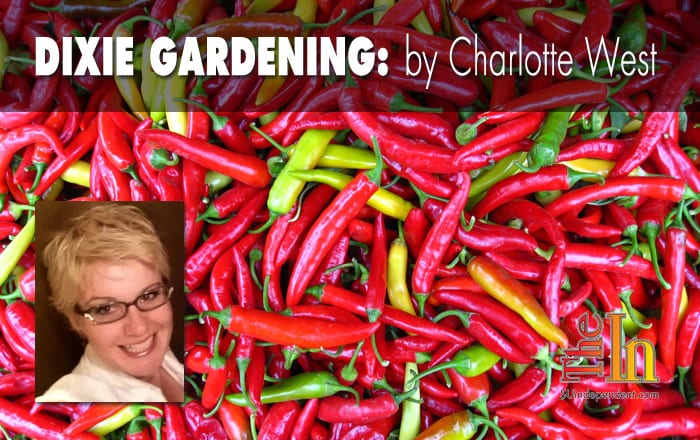
Written by Charlotte West
There are basically two types of peppers: the sweet peppers, which are usually mild and range from big stuffing peppers to the bell pepper and small salad peppers, and the hot peppers. In this article, we are going to discuss the hot pepper, a somewhat tricky pepper to grow.
My Grandma used to say the hotter the temperatures, the hotter you can grow a pepper.
You would think here in the Southwest, peppers would be a breeze to grow, but some years, they are a big disappointment.
The key to growing hot peppers is that they require a constant 65 degrees or hotter soil temperature, not only to germinate but to also to produce to their full potential. And when temperatures outside drop below 55 degrees (and that includes at night), they seem to become stunted. Additionally, you need to have an exceptionally long, warm growing season. Due to these factors, most gardeners purchase hot peppers from starts.
Wait to plant until you know night temperatures will stay above 55 degrees, and it will not hurt to fertilize a few times before blossoms set. In the past few weeks, southern Utah has seen definite fluctuations in night temps which could potentially affect your pepper production this year if you have already planted. If you have not planted yet, luck may still be on your side.
If you are one who struggles with hot peppers, here are a couple suggestions for better success. You can plant peppers in pots. Peppers tend to like a looser, well-drained soil, and in pots, you can move them around to receive maximum sunlight and protect them if night temps fall for too long. If you have a southern facing brick wall, they could benefit from placement there as heat radiates from brick or concrete walls. You could also place the peppers in cinder blocks or some sort of concrete block, and the soil will stay heated from the concrete, effectively maximizing the growing season well into late fall by doing so.
These are some little helpful tips that hopefully will inspire a love for growing peppers and help you get the best yield possible so you can be the master of habaneros, become a perfect Hungarian wax pepper grower, and have beautiful, long red cayennes. Remember if you are drying your peppers to enjoy when the summer is gone, when you are harvesting make sure to leave a little stem on the pepper when snipping them. And dry them away from moisture so as not to gather mold. I wish you all a hot success this pepper season.




